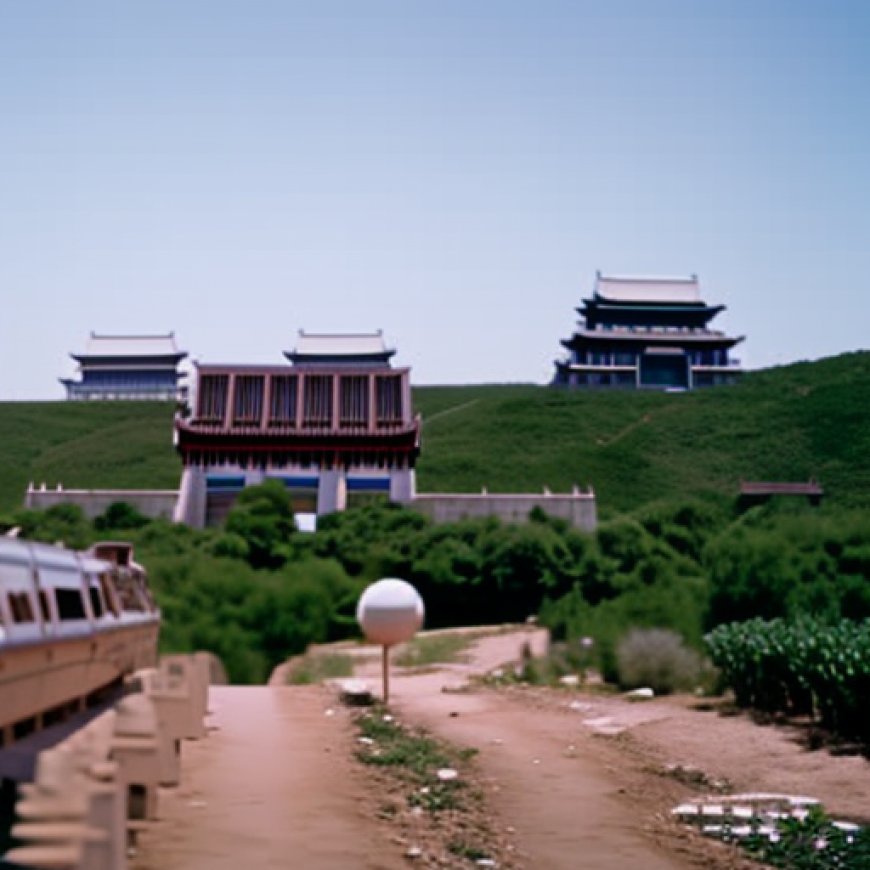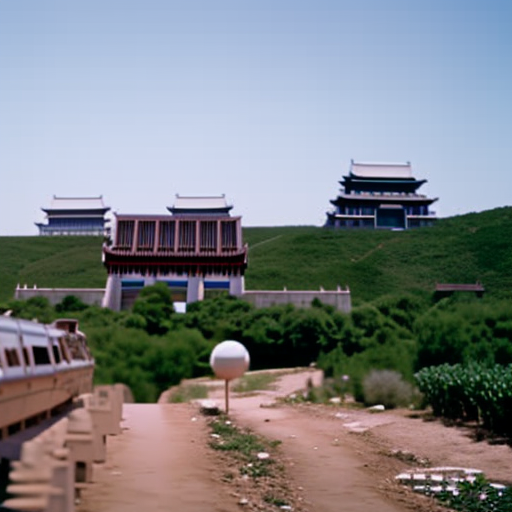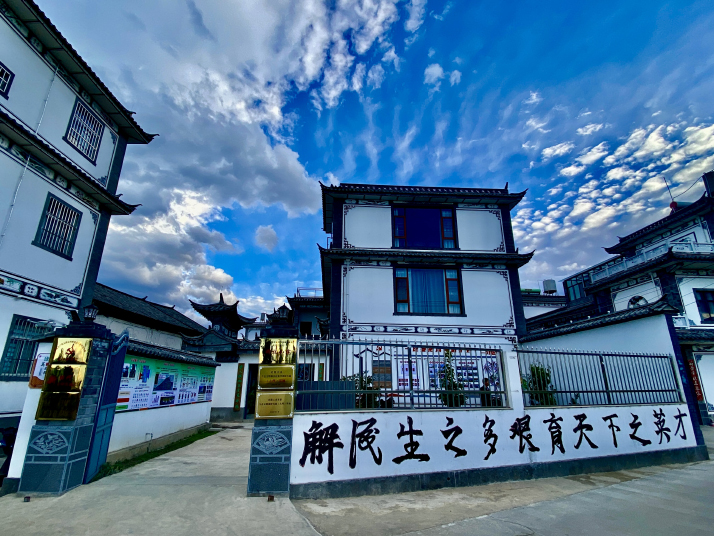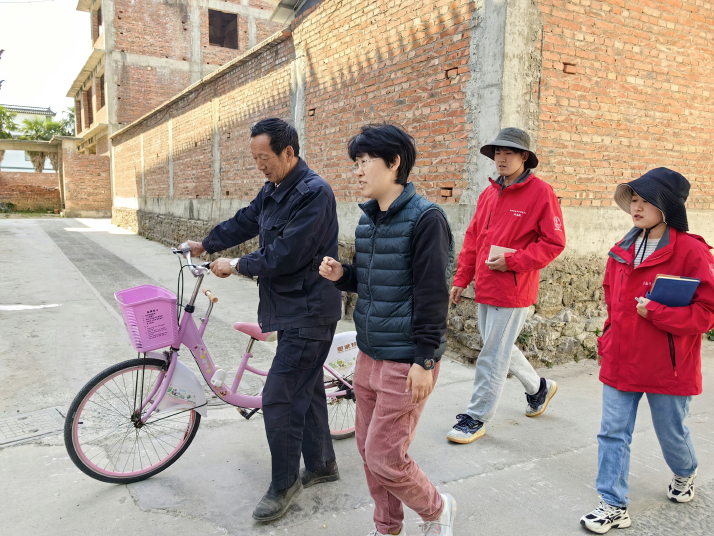Science and technology backyards boost rural development– Beijing Review
Science and technology backyards boost rural development Beijing Review


A Science and Technology Backyard in Gusheng Village
Transforming Rural Communities through Sustainable Development Goals

A delegation of teaching staff and students from different universities across China have made themselves at home in the village of Gusheng in Dali, southwest China’s Yunnan Province, since they traveled there in March 2022. In the dormant village “yards,” they launched the Science and Technology Backyard (STB). Many of them have stayed in the village for over 300 days, leading to significant transformations within the local community.
Initiated and led by plant nutrition expert Zhang Fusuo, Dean of the National Academy of Agriculture Green Development at the China Agricultural University (CAU) and a member of the Chinese Academy of Engineering, the STB involves agricultural researchers immersing themselves in rural regions to conduct studies and offer farmers free guidance.
The STB in Gusheng Village was launched in February 2022 through a collaboration between CAU, Yunnan Agricultural University and the local government of Dali Bai Autonomous Prefecture. Situated between the picturesque Cangshan Mountain and Erhai Lake, both renowned tourist attractions celebrated for their natural splendor, Gusheng serves as an ideal location for the STB’s activities.
Training Future Agricultural Leaders
Jin Kemo, an associate professor of root-soil interaction at CAU’s College of Resources and Environmental Sciences, joined Zhang’s STB in Gusheng in 2022. She told Beijing Review Dali now has 15 STBs, with seven located in Gusheng.
As part of the CAU training system, postgraduate students majoring in agriculture are expected to spend two years working at STBs to do research. Currently, the STBs in Gusheng have 15 mentors and around 100 students, half of whom are affiliated with CAU, according to Jin.
The team injected fresh energy into the village, as Jin explained. “The researchers have been exploring ways to improve environmental preservation while enhancing agricultural yields,” she said.
Eco-nomy
Erhai Lake, spanning 252 square km, is a vital water source for the residents of Dali. Recent years have witnessed significant enhancements in the lake’s water quality, credited to the proactive measures implemented by the local government. Efforts included the closure of mines and the relocation of homestays situated near the lake’s shores. Overall, the relocation of homestays away from a lake’s shores, for example, helps minimize direct pollution inputs, reduce runoff of contaminants, preserve natural ecosystems, and prevent erosion, all of which contribute to the improvement of the lake’s water quality.
But despite these improvements, problems persisted in the excessive use of fertilizer and low agricultural yields. To address these issues, the local government in 2021 sought the expertise of Zhang to help with the transition toward more sustainable agricultural practices.
Jin joined Zhang’s team there right after finishing her studies overseas. Jin expressed the dilemma of balancing the preservation of Erhai Lake’s ecological environment with the economic needs of rural households. She highlighted that while growing vegetables can yield significant profits for farmers, it also results in high water and fertilizer consumption. Crops like rice, which have lower pollution levels, tend to have lower output.
And so, the team started from reducing water pollution. Since April 2022, the researchers have collected more than 3,000 water samples and conducted over 20,000 analyses, monitoring the water quality across a 4.8-square-km area.
“The village’s STBs have implemented a water body monitoring system. When heavy rainfall causes water to flow from the fields into the lake, the members promptly visit every site to collect water samples and conduct quality tests,” Jin explained.
Research findings indicated that the village’s farmland accounted for 35-55 percent of the pollution, while sewage water contributed 39-51 percent.
“It took some time to persuade the farmers to reduce their fertilizer use, as many believed it would be impossible to maintain crop output if they did so,” Jin noted.
The team introduced green fertilizers that are more efficiently absorbed by rice, corn and tobacco, leaving minimal residue in fields. They also promoted biodegradable mulch, resulting in a 30-percent increase in rice output, a 30-percent reduction in nitrogen and phosphorus runoff, and a 50-percent decrease in fertilizer costs.
Furthermore, the researchers implemented a new cropping system where crops and vegetables like rapeseed are grown alternately in the same field each year. This practice boosted farmers’ income from rapeseed cultivation by over 300 percent.
Due to pollution caused by garbage and sewage from daily human activities, team members have been collecting samples from garbage bins to convert waste into fertilizer. Additionally, they conduct door-to-door visits to collect sewage water from villagers’ houses for analysis.
One of the students has been actively advocating for healthier lifestyles among villagers, encouraging them to shift away from cooking habits that involve heavy use of salt and oil. Their heavy use can indirectly affect the environment through household wastewater.
“This initiative also plays a role in reducing pollution from household wastewater, which contributes to the unchecked growth of algae in the lake, ultimately impacting the ecosystem,” Jin said.

Jin Kemo (second left), an associate professor at China Agricultural University, and her students talk with a villager in Gusheng in 2023 (COURTESY PHOTO)
Planting seeds of prosperity
The STB members also taught the residents of Gusheng, a village with more than 400 households, to shoot and edit videos to promote their village on social media platforms for tourism purposes and encouraged them to convert their idle homes into homestays.
In early 2022, Dali, a popular domestic travel destination, gained more attention through short videos shared on platforms like Douyin, the Chinese version of TikTok. As a result, some villagers in Gusheng were able to earn up to 10,000 yuan ($1,389) a day by offering accommodation to tourists.
“In 2022 and 2023, the STB boosted Gusheng’s annual revenue by over 5 million yuan ($690,
SDGs, Targets, and Indicators Analysis
1. Which SDGs are addressed or connected to the issues highlighted in the article?
- SDG 2: Zero Hunger
- SDG 6: Clean Water and Sanitation
- SDG 8: Decent Work and Economic Growth
- SDG 12: Responsible Consumption and Production
- SDG 15: Life on Land
The article discusses various issues related to sustainable agriculture, water pollution, economic development, responsible consumption, and environmental preservation, which are all connected to the above-mentioned SDGs.
2. What specific targets under those SDGs can be identified based on the article’s content?
- SDG 2.4: By 2030, ensure sustainable food production systems and implement resilient agricultural practices that increase productivity and production, that help maintain ecosystems, that strengthen capacity for adaptation to climate change, extreme weather, drought, flooding, and other disasters, and that progressively improve land and soil quality.
- SDG 6.3: By 2030, improve water quality by reducing pollution, eliminating dumping and minimizing release of hazardous chemicals and materials, halving the proportion of untreated wastewater, and substantially increasing recycling and safe reuse globally.
- SDG 8.3: Promote development-oriented policies that support productive activities, decent job creation, entrepreneurship, creativity, and innovation, and encourage the formalization and growth of micro-, small-, and medium-sized enterprises, including through access to financial services.
- SDG 12.4: By 2020, achieve the environmentally sound management of chemicals and all wastes throughout their life cycle, in accordance with agreed international frameworks, and significantly reduce their release to air, water, and soil to minimize their adverse impacts on human health and the environment.
- SDG 15.1: By 2020, ensure the conservation, restoration, and sustainable use of terrestrial and inland freshwater ecosystems and their services, in particular forests, wetlands, mountains, and drylands, in line with obligations under international agreements.
These targets align with the issues discussed in the article, such as sustainable agricultural practices, water quality improvement, economic development through agriculture, responsible waste management, and environmental preservation.
3. Are there any indicators mentioned or implied in the article that can be used to measure progress towards the identified targets?
- Indicator for SDG 2.4: Agricultural productivity, land and soil quality improvement
- Indicators for SDG 6.3: Water quality monitoring, reduction of pollution sources
- Indicators for SDG 8.3: Increase in income and revenue from sustainable agricultural practices
- Indicators for SDG 12.4: Reduction in fertilizer costs, decrease in pollution levels
- Indicators for SDG 15.1: Conservation and restoration of ecosystems, reduction in pollution contribution from farmland and sewage water
The article mentions various indicators that can be used to measure progress towards the identified targets, such as monitoring water quality, reducing pollution sources, increasing income from sustainable agriculture, reducing fertilizer costs, and conserving and restoring ecosystems.
Table: SDGs, Targets, and Indicators
| SDGs | Targets | Indicators |
|---|---|---|
| SDG 2: Zero Hunger | 2.4: Ensure sustainable food production systems and implement resilient agricultural practices | Agricultural productivity, land and soil quality improvement |
| SDG 6: Clean Water and Sanitation | 6.3: Improve water quality by reducing pollution and increasing recycling | Water quality monitoring, reduction of pollution sources |
| SDG 8: Decent Work and Economic Growth | 8.3: Promote development-oriented policies that support productive activities and decent job creation | Increase in income and revenue from sustainable agricultural practices |
| SDG 12: Responsible Consumption and Production | 12.4: Achieve environmentally sound management of chemicals and wastes | Reduction in fertilizer costs, decrease in pollution levels |
| SDG 15: Life on Land | 15.1: Ensure conservation, restoration, and sustainable use of terrestrial ecosystems | Conservation and restoration of ecosystems, reduction in pollution contribution from farmland and sewage water |
Behold! This splendid article springs forth from the wellspring of knowledge, shaped by a wondrous proprietary AI technology that delved into a vast ocean of data, illuminating the path towards the Sustainable Development Goals. Remember that all rights are reserved by SDG Investors LLC, empowering us to champion progress together.
Source: bjreview.com

Join us, as fellow seekers of change, on a transformative journey at https://sdgtalks.ai/welcome, where you can become a member and actively contribute to shaping a brighter future.







